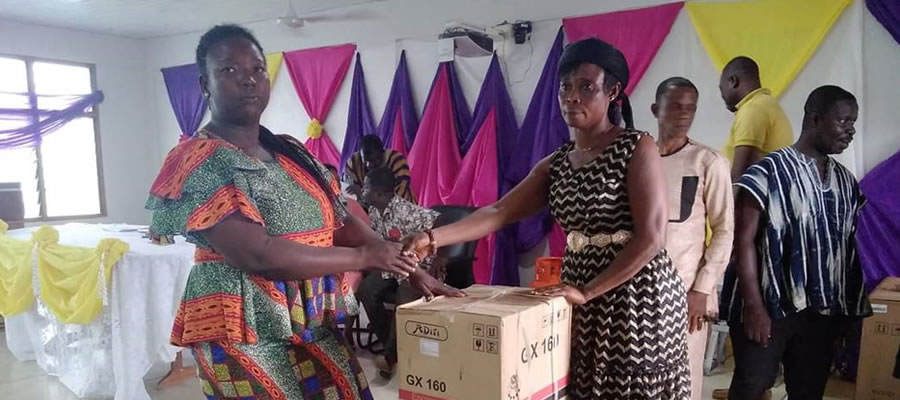

Literacy and Education
Introduction
Education is an important aspect of societal development. It is the process of acquiring knowledge, skills, values and attitudes to fully develop individual capacities for societal well-being. There is a relationship between education, human resource development and economic growth (UNDP, 2011). Countries therefore place emphasis on educational policies in designing their plans to accelerate development. It is for this reason that of the eight Millennium Development Goals (MDGs) one of the goals (MDG 2) is achieving universal primary education by 2015 (United Nations Development Programme, 2010). Two indicators used to track MDG 2 are Net Enrolment Ratio (NER) in primary education and proportion of people starting Grade1 who reach the last grade of primary education. In addition, one of the indicators for MDG 2 is the ratio of boys to girls in primary, secondary and tertiary education. Education is also one of the three variables used for the calculation of the Human Development Index (HDI) (UNDP, 2010).
Literacy
Much information is transmitted in written form and therefore the ability to read and write a simple sentence with understanding is very essential. Literacy is defined as the ability to read and write in any language and relates to those aged 11 years and older. Figure 3.2 present the literacy status of the population 11 years and older in Sefwi Akontombra Dristrict. The highest proportion (67.8%) of the population aged 11 years and older are literate in English and Ghanaian language. Persons who are literate in English only account for 20.6 percent. About 11.0 percent are literate in Ghanaian language only. The proportion literate in English and French and French, English and Ghanaian language constitute the least proportion of 0.3 percent each.
Table 3.9 represent the population 11 years and older by sex, age and literacy status. From the table, in all the age groups, the proportion that are literate in English and Ghanaian language is the highest followed by those who are literate in English only and Ghanaian language only. The data shows that English language is more popular than Ghanaian language in the district; there is therefore the need to make literacy in Ghanaian language attractive in the district. The population who are literate in English and French and Ghanaian language represent a small percentage among the various age groups. Ghana is surrounded by French speaking countries and therefor literacy in the French language should be encouraged to enhance better communication among its neighboring countries.
In terms of sex, Table 3.9 shows that in the district, 70.9 percent of the male population is literate in English and Ghanaian language, while 18.5 percent are literate English language only and 10.0 percent in Ghanaian Language. On the other hand, 63.3 percent and 23.6 percent of the female population are literate in English and Ghanaian Language and English only respectively. The table shows that the proportion “not literate” increases with age from 11-14 years up to 40-44 years in the district.
School Attendance
Out of the total population of persons 3 years and older (74,759) in Sefwi Akontombra District, 31.0 percent have never been to school, 38.8 percent are currently in school while 30.2 percent have attended school in the past (Figure 3.3). The female (36.4%) population who has never attended school is higher than the male (26.2%) population who has never attended school. For the population which is attending school now, the male proportion (39.7%) is higher than the female (37.9%). Three out of every ten males attended school in the past while for females it is two out of every ten.
Level of Education
Table 3.10 shows the level of education and school attendance of males and females three years and older in the district. The total population currently in school is 29,059 including (54.2%) males and (45.8%) females. Out of this number, about 50.0 percent are in primary school, followed by 16.4 percent in Kindergarten, whiles 16.2 percent are Junior High School and 6.9 percent are in Senior High School. Only a small proportion of the population is in vocational or technical or commercial school (0.1%), or post middle or secondary (0.2%), or tertiary (0.6%) levels of education.
For those who attended school in the past in the district, Table 3.10 shows that the highest level of schooling attended is JSS/JHS (35.1%), Middle (27.3%) and Primary (24.0%).This clearly affirms that JSS/JHS education is the highest level of schooling attended in the district by most of the population.
In relation to educational attainment by sex, there is relatively higher proportion of females (40.8%) than that of the males (31.4%) with JSS/JHS, as well as Primary as the highest level of schooling. That is, a small proportion of females (6.0%) than males (9.2 %) progress to SSS/SHS, secondary and other higher levels. At each of these post-basic levels (SSS/SHS, Secondary, Post Middle/Post-Secondary Certificate, Post-Secondary Diploma, Bachelor Degree, and Post Graduate) the proportion for males is consistently higher than that for females. This suggests that, in the past, females were more likely than males to terminate schooling after the basic school level
Date Created : 11/20/2017 4:08:59 PM








 facebook
facebook
 twitter
twitter
 Youtube
Youtube
 +233 593 831 280
+233 593 831 280 0800 430 430
0800 430 430 GPS: GE-231-4383
GPS: GE-231-4383 info@ghanadistricts.com
info@ghanadistricts.com Box GP1044, Accra, Ghana
Box GP1044, Accra, Ghana